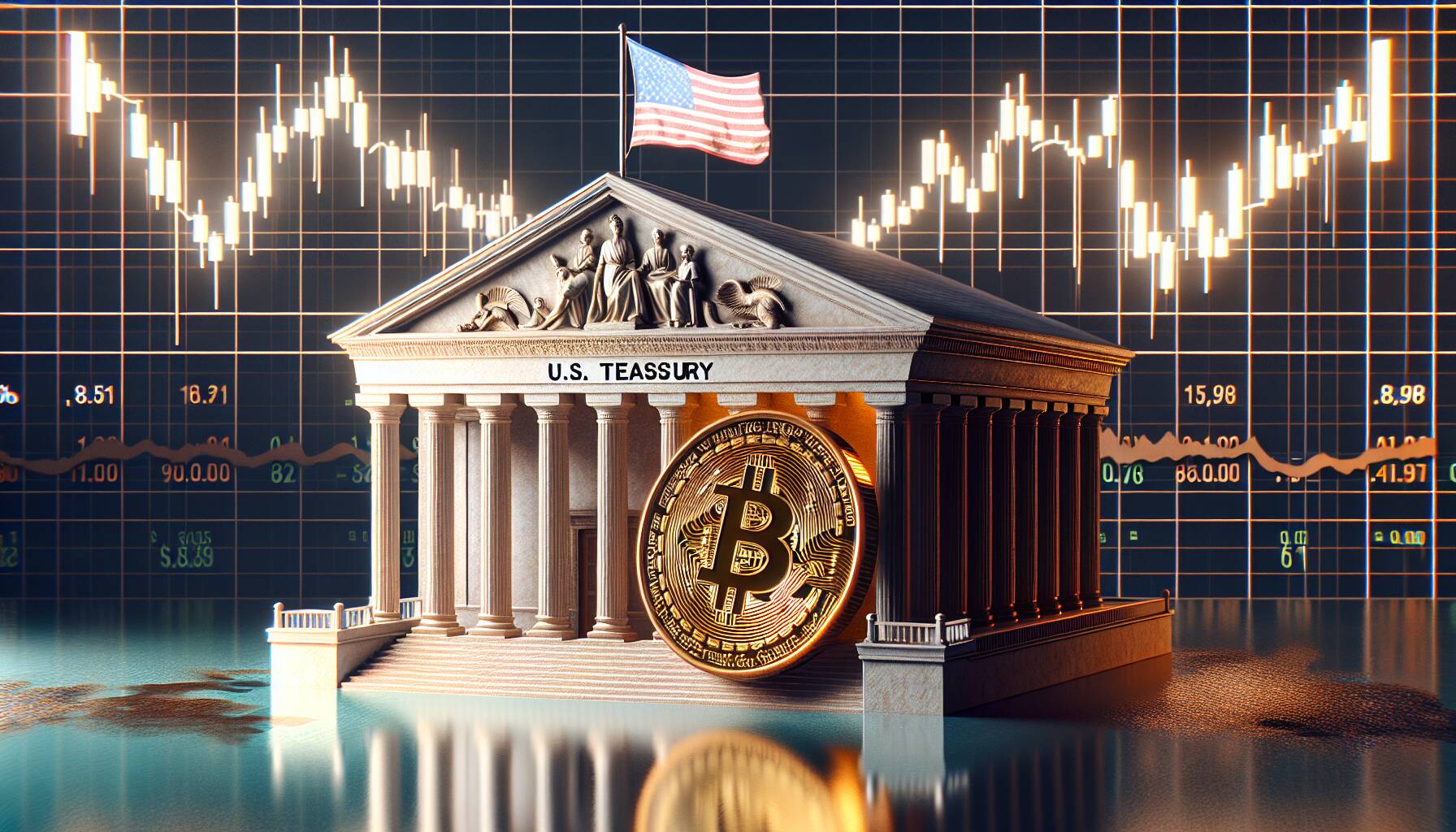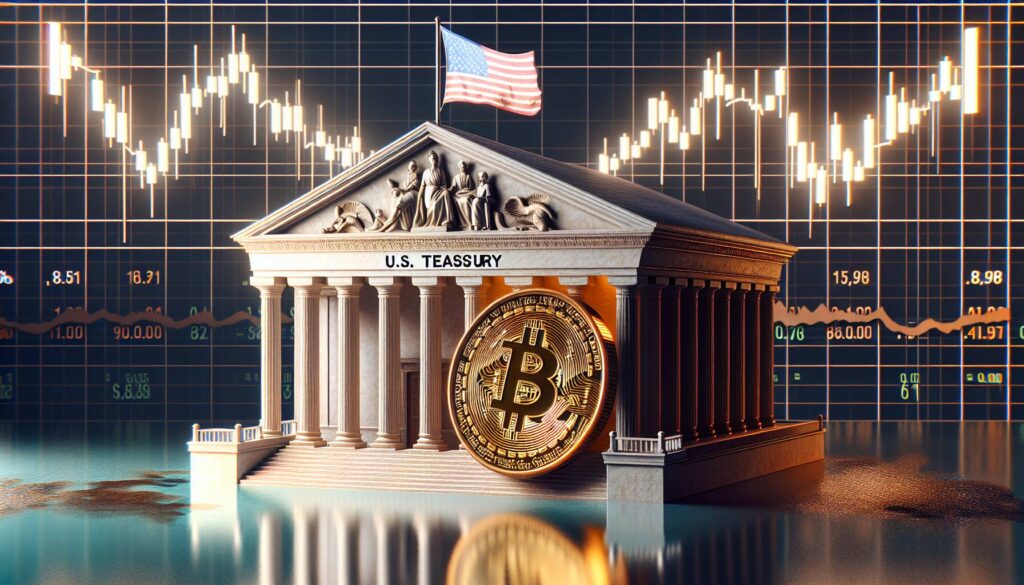The U.S. Treasury market is currently shaken up by significant volatility, reaching levels not seen in four months, and this could have implications for the ongoing recovery of Bitcoin (BTC) prices. In February, the U.S. inflation data revealed a softer-than-anticipated picture, which is generally good news as it bolsters arguments for potential interest-rate cuts by the Federal Reserve. This data has led some analysts to speculate that Bitcoin might reach prices of ,000 or more, with its current value hovering around ,000.
“With inflation cooling and recession fears still looming but not worsening, Bitcoin could be on the verge of its next major breakout, pushing past the stubborn sub-K range,” said Matt Mena, Crypto Research Strategist at 21Shares.
However, any potential upswing may not be as rapid as enthusiasts hope. The Merrill Lynch Option Volatility Estimate Index (MOVE), which tracks expected 30-day volatility in the U.S. Treasuries market, has escalated to 115, marking its highest point since early November. This index has surged by 38% in just three weeks, highlighting a significant shift in market sentiment.
The rising turbulence in the Treasury notes—critical components of global finance—can lead to decreased liquidity and leverage across different financial markets. Such conditions often prompt investors to scale back on riskier assets, potentially slowing down the momentum for Bitcoin’s anticipated recovery.
Historically, there has been a correlation between movements in the MOVE index and Bitcoin’s price dynamics. After the November 4 elections, the index saw a decline that coincided with Bitcoin’s remarkable surge from ,000 to as high as 8,000. As the MOVE index stabilized during late 2022, Bitcoin experienced its peak rally, but the current rise in volatility may bring new challenges for cryptocurrency investors.

Impact of U.S. Treasury Market Volatility on Bitcoin Price Trends
The current volatility in the U.S. Treasury market is raising concerns for the future of Bitcoin, potentially affecting investors and traders alike.
- Highest Volatility in Four Months:
- The U.S. Treasury market is experiencing significant fluctuations, which has implications for various financial assets, including Bitcoin (BTC).
- Higher volatility may mean increased uncertainty for investors, leading to risk aversion.
- Inflation Data Influencing Market Sentiment:
- Recent U.S. inflation data for February indicated a softer-than-expected outcome.
- This has given rise to expectations of Federal Reserve interest-rate cuts, potentially boosting investment in risk assets like Bitcoin.
- Forecast of Bitcoin Price Recovery:
- Analysts are optimistic about Bitcoin recovering to ,000 and beyond due to cooling inflation and ongoing recession fears.
- Comments from experts, such as Matt Mena, suggest that Bitcoin could be approaching a breakout point, which may attract investors.
- Effects of Increased Treasury Market Volatility:
- The Merrill Lynch Option Volatility Estimate Index (MOVE) has surged by 38% in three weeks, indicating rising uncertainty.
- This rise in volatility can tighten liquidity and reduce leverage in the financial markets, subsequently affecting overall market risk appetite.
- Historical Context:
- Following the Nov. 4 election when the MOVE index collapsed, Bitcoin’s price surged significantly, highlighting how external market factors can dramatically influence cryptocurrency prices.
- The previous peak of Bitcoin at 8,000 occurred when market volatility was lower, illustrating a potential correlation between market stability and Bitcoin price increases.
The Impact of U.S. Treasury Volatility on Bitcoin’s Price Trajectory
The U.S. Treasury market is currently experiencing significant fluctuations, the highest levels seen in four months, which could pose challenges for the anticipated recovery of bitcoin prices. This situation unfolds against a backdrop of softer-than-expected U.S. inflation data, instigating discussions about potential Federal Reserve interest rate cuts. While some analysts are optimistic, predicting bitcoin to soar to ,000 or beyond, others remain cautious, highlighting how current market dynamics may decelerate this upward trend.
Competitive Advantages: The cooling inflation rates, along with a moderate recession outlook, could foster a constructive environment for bitcoin’s resurgence. Given that the cryptocurrency is hovering around ,000, there is a palpable sense of excitement among enthusiasts who see this as an opportunity for robust gains. Experts like Matt Mena from 21Shares advocate that should the market stabilize, bitcoin could indeed breach previous resistance levels, attracting both institutional and retail investors looking for alternatives to traditional assets.
Competitive Disadvantages: However, the rising MOVE index indicates that increased volatility in U.S. Treasuries can deter risk-taking behaviors in broader financial markets. This immediate uncertainty may not only sap liquidity but also affect leveraged positions in bitcoin trading. Historical patterns suggest that elevated Treasury volatility correlates with a sluggish market response, potentially hindering any bullish momentum the cryptocurrency might gain.
This volatility landscape could particularly benefit risk-averse investors, who may view the current conditions as a signal to hold off on aggressive positions in both Treasuries and bitcoin until stability returns. Conversely, this scenario could be problematic for an array of stakeholders, including crypto traders and institutions that rely on predictable market movements for their strategies. For those heavily invested in bitcoin with hopes for a quick rebound, the unpredictable nature of current volatility may increase anxiety, affecting their trading decisions and overall market sentiment.

















